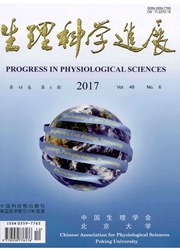

 中文摘要:
中文摘要:
低氧性肺血管收缩反应(HPV)是指在急性低氧时,肺泡氧分压降到某一临界值,肺血管发生的快速、可逆的收缩反应,以纠正肺泡通气/灌流的不匹配。HPV的发生与肺动脉平滑肌细胞上K^+、Ca^2+、Cl^-通道的状态密切相关,而这些通道在不同部位的肺动脉上分布存在差异,因此不同部位的肺动脉在低氧中所表现的收缩反应程度也不同,本综述将对上述通道在肺动脉上的分布特点及其在HPV中的作用做一总结。
 英文摘要:
英文摘要:
Hypoxic pulmonary vasoconstriction (HPV) is the rapid, reversible increase in pulmonary vascular resistance that occurs when the alveolar oxygen tension falls below a threshold level, thereby achieving ventilation/perfusion matching. HPV is closely related to the state of K ^+ , Ca^2+ and Cl^- channels in pulmonary arterial smooth muscle cells, which distribute heterogenously along the longitude of pulmonary artery tree, and cause heterogenous vasoconstriction response in different part of pulmonary artery in HPV. In this review we summarize current knowledge about the distribution of these ion channels and their roles in HPV.
 同期刊论文项目
同期刊论文项目
 同项目期刊论文
同项目期刊论文
 期刊信息
期刊信息
